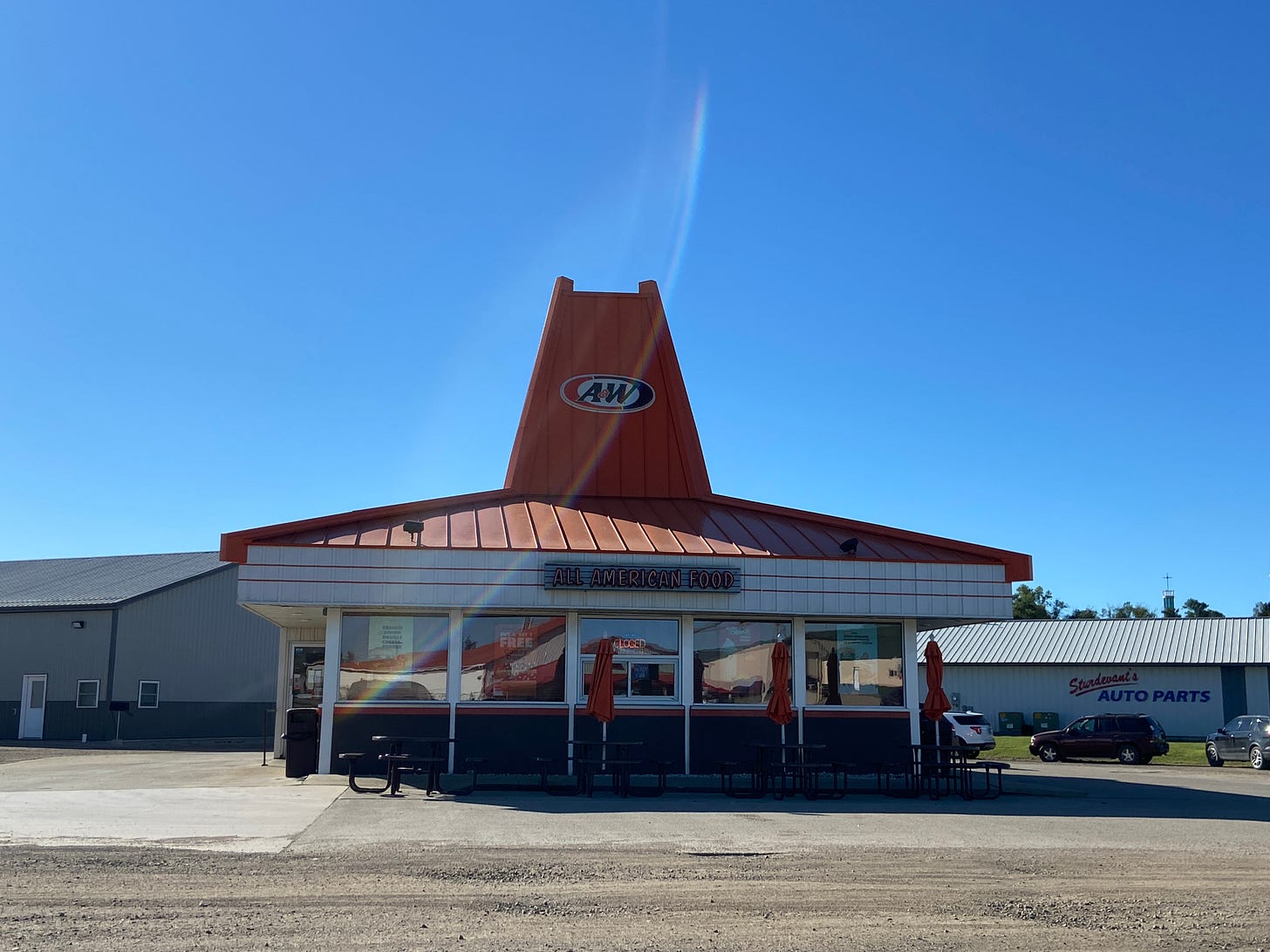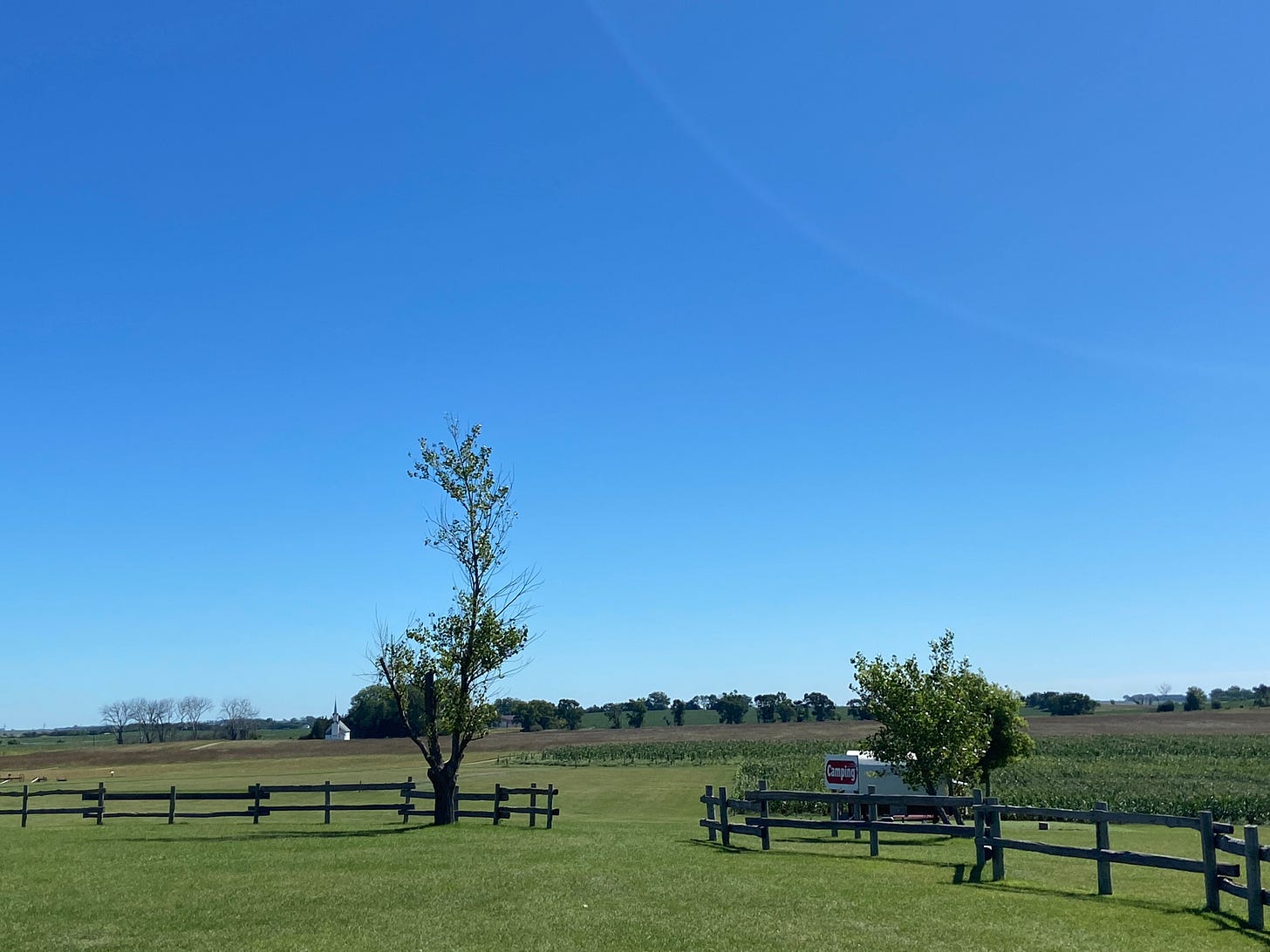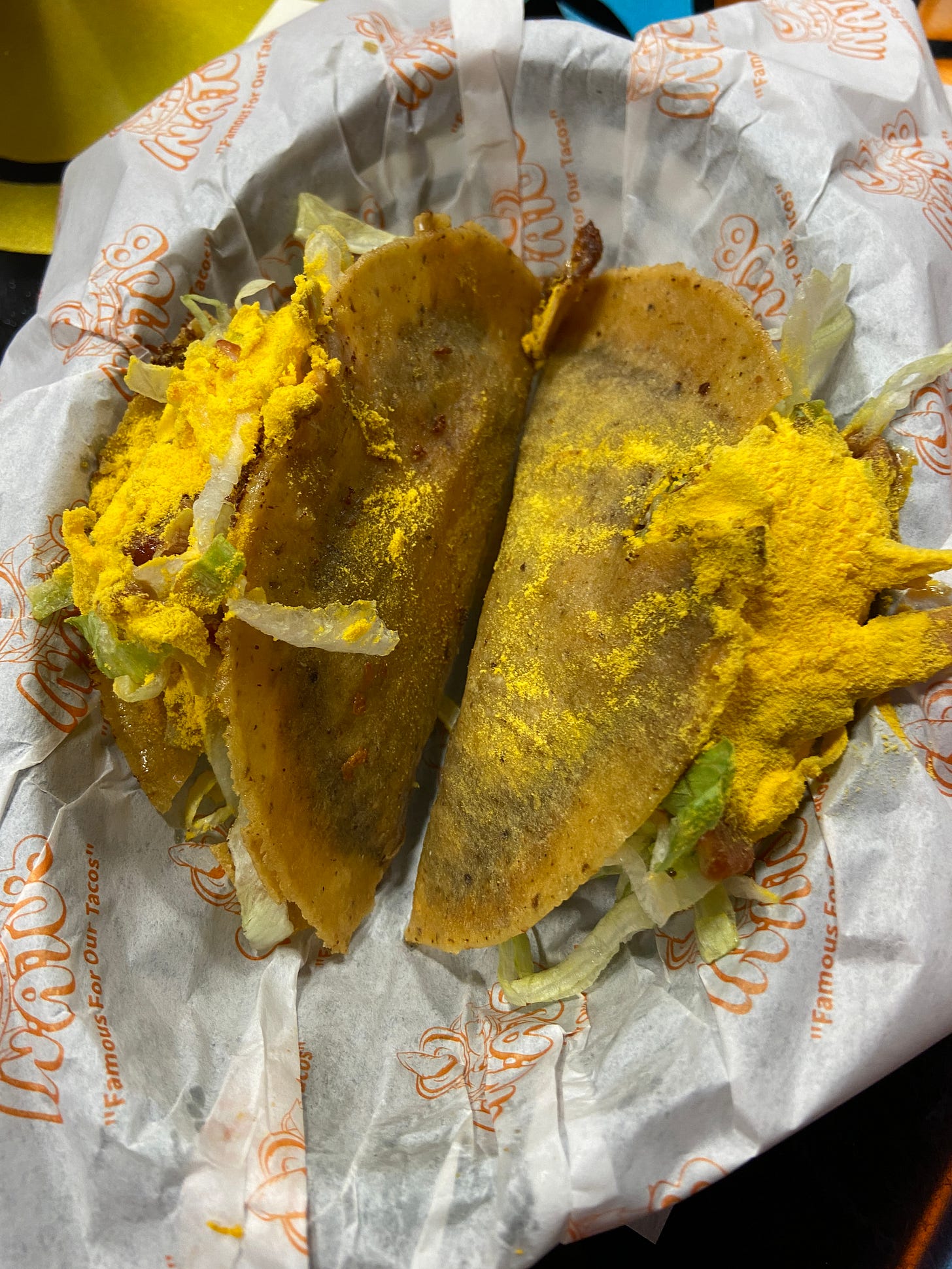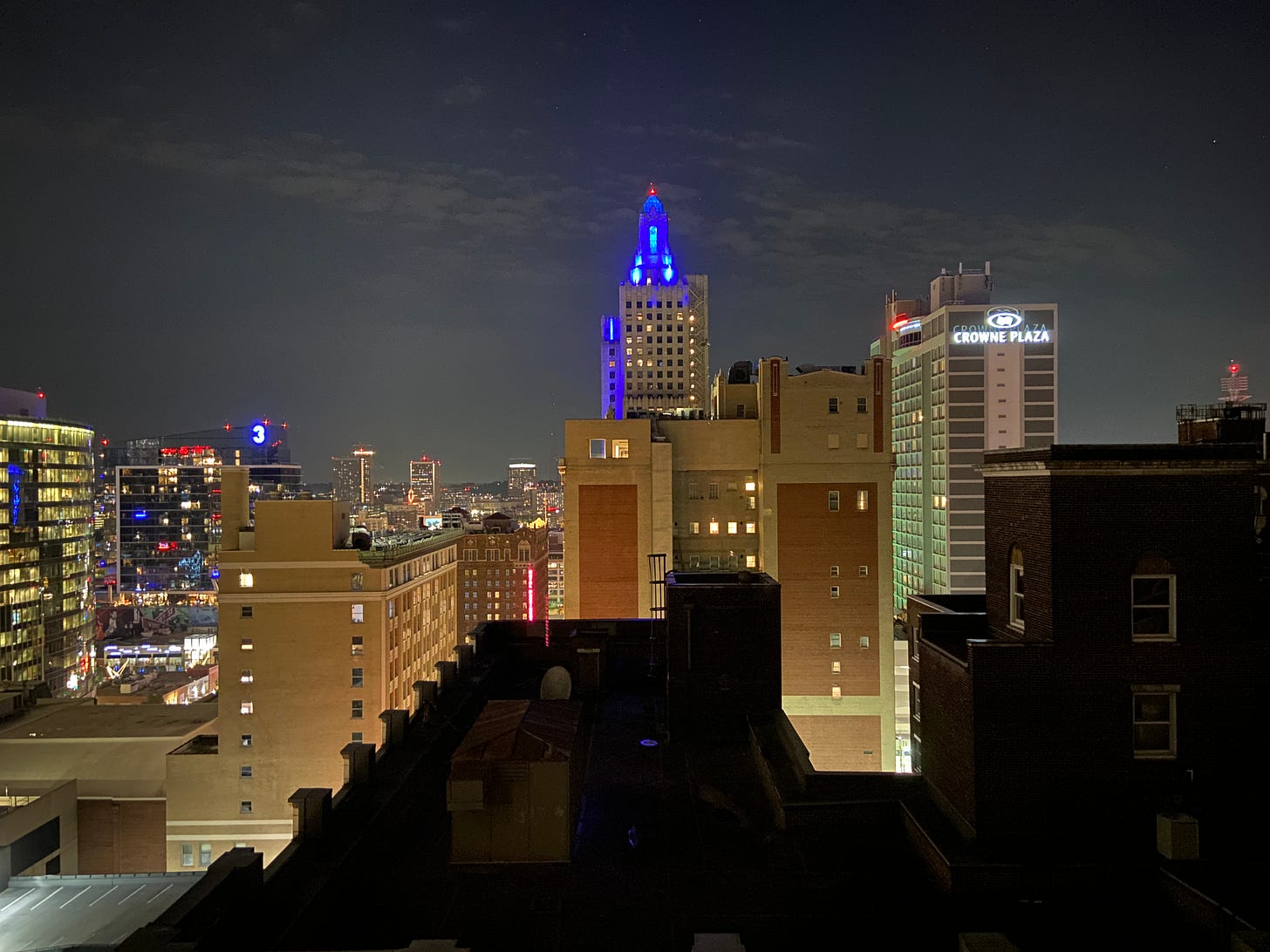After a stay in Minneapolis, and some time on my aunt’s farm in South Dakota, my wife and I set off for home. The plan—to drive through the states that make up the middle of the United States, to see what these farming states look like up close.
Spoiler—they all look about the same.
From western Minnesota, through the Dakotas, south through Iowa, Nebraska, Missouri, Kansas, and Oklahoma, the landscape is all pretty similar. In fact, it reminded me a lot of North Texas. Flat farmland with scrubby vegetation and occasional groves of trees interspersed throughout.
I found something comforting in that, though. All these different parts of the U.S., filled with all these subcultures and distinct communities, and yet, a landscape that binds them all. Hundreds of miles separating them, maybe, but a lifestyle that’s similar. All of them working hard, feeding a country, maybe the world, mostly religious, practical people, living in these open plains.
From Minnesota all the way back to Texas, everyone was friendly and kind. It sounds like a cliche, but the whole world just moved slower in these states (except in Kansas City—more on that later). The pace just felt calmer most places we were.
We stopped in De Smet, South Dakota, because it’s one of the places Laura Ingalls Wilder. Is Little House on the Prairie something still on the pop culture radar? I know the TV show probably isn’t, but do kids still read the books? The town goes heavy into the Ingalls family history, as the highly itinerant clan stayed here the longest. In fact, most of the family besides Laura is buried in De Smet.
We chose not to tour any of the sites they have, due to time and the fact that they were a bit overpriced ($20 per person for some restored historical sites was giving inflation or whatever the kids would say). But here’s a view from the visitor’s center:
Leaving South Dakota, we drove through Iowa, essentially following the Missouri River for quite a stretch. The interstate highway designers carefully laid I-29 between the Missouri and a rise of bluffs that goes on for miles and miles. This scenery was a welcome break from the never-ending fields of crops.
We eventually crossed into Nebraska and stopped at the location 19th century explorers Lewis and Clark called Council Bluff. This isn’t to be confused with the nearby city of Council Bluffs, which lies in Iowa. This location, now known as Fort Atkinson, which is in the town of Fort Calhoun, is where Lewis and Clark first met with members of the Oto and Missouri tribes during the duo’s famous expedition. Did you catch all that?
Lewis and Clark recommended the government build a fort at the location, and they did. Hence the Fort Atkinson, that only last about ten years. After a short tour of the recreated fort, we moved on into Missouri, headed for Kansas City.
Near the outskirts of Kansas City, the landscape finally changed drastically. Soon we were in rolling hills, green and full of trees. The highway had to wind through them, slowing us down, frustrating after a long day of driving.
Also, at this point, my wife was fully sick from a cold or even Covid, picked up at the airport. I would eventually start feeling the same illness the next day, so what I took for exhaustion was probably the onset of the same.
Before the hotel, though, we stopped at a place recommended by a friend from the Kansas City area called In a Tub. The draw? Deep fried tacos.
If you’ve ever had tacos from the Jack in the Box, these are similar, just higher quality. The detail that sets them apart, though, is the powdered cheese sprinkled on top. It’s the same kind you get in a box of macaroni and cheese…and it works? The way it combines with the greasy beef is a unique taste I doubt I’ll find anywhere else. In a Tub also serves something they call pocket burgers, which turned out to be a more put together sloppy joe—ground beef mixed with ketchup, mustard, relish, and maybe some other flavor, formed into a loose patty. It was good, not worth raving about, but if I make my way back, I’ll order one again.
Full of tacos, we made our way to the hotel. This was the one fancy place we splurged on during our trip, the Hotel Phillips, built in 1931. It’s now part of the Hilton group of hotels, but they’ve retained the original art deco feel of the original hotel.
They’ve kept a small amount of rooms in their original form, with some modern upgrades. This is how I learned hotel rooms used to be TINY.

That’s pretty much the whole room. To the right is a desk and a TV stand with a fairly large TV, but that’s about it. To the left is the tiny bathroom. The room felt cozy, and it made me wish we were there in the winter. Tucked away in the tiny room, high above the city, maybe with Christmas lights everywhere, would have been wonderful. Speaking of wonderful—the view:
The next day, we took off for home. Passing through the eastern part of Kansas, finding more fields, more corn, more soybean. All of it familiar from several other states. More of the same in a nation so large and fruitful in dominates the world. Miles and miles of crops, so many you can drive for days and still not see them all. So much land that it feels infinite at times, and then you remember there’s more. Mountains, coasts, forests, swamps, deserts, and more.
We moved through Oklahoma, the terrain staying the same until we reached the middle, where the hills and trees started rising again. Then back in North Texas, where the land flattened again. The only difference is the crops. I don’t know why, but we don’t grow much soybean in Texas. Some corn, and cotton, maybe some other things. But not like the farmland north of us.
Nine states, five days. More than 1,500 miles on the road. We wanted to see this part of the country, middle America. It was about what I expected, but bigger. Wider. More empty. There’s parts I want to see again, and places we didn’t make it to, like the western half of South Dakota.
But it was the perfect trip, besides us getting sick. We got to see what was different, and what was the same. It’s why I like to get away from what’s familiar. Not to the tourist spots, even though there’s nothing wrong with them. But I like the overlooked places, too. The places we often fly over or drive past. They matter, too.
Read: Traveling through so much farmland made me think of Gilead by Marilynne Robinson. The novel is set in Iowa, in a small farm town like so many I passed through. It’s beautifully written, as the narrator recounts his life in a letter to his young son. The novel touches on the peace of small moments of happiness in life, despite chaotic nature of the world at times. If you like it, Robinson has written three other novels in the series, all telling parts of the same story from viewpoints of different characters. Gilead is one of my favorite books, and the other books in the series flesh out the rest of the world that only enhances Gilead.











A prior job of mine was as the Technical Director of a fancy preforming arts center attached to a school. A lot of things we did were fancy events or productions, but we also hosted elementary programs. One grade did an annual Little House on the Prairie program, where they would reenact scenes from the book (with the same ancient props every year) and do some square dancing that the PE teacher would have taught them. The kids always looked so confused because honestly central Mississippi is forestry country so prairies don't make sense to kids. But they seemed to enjoy it either way.